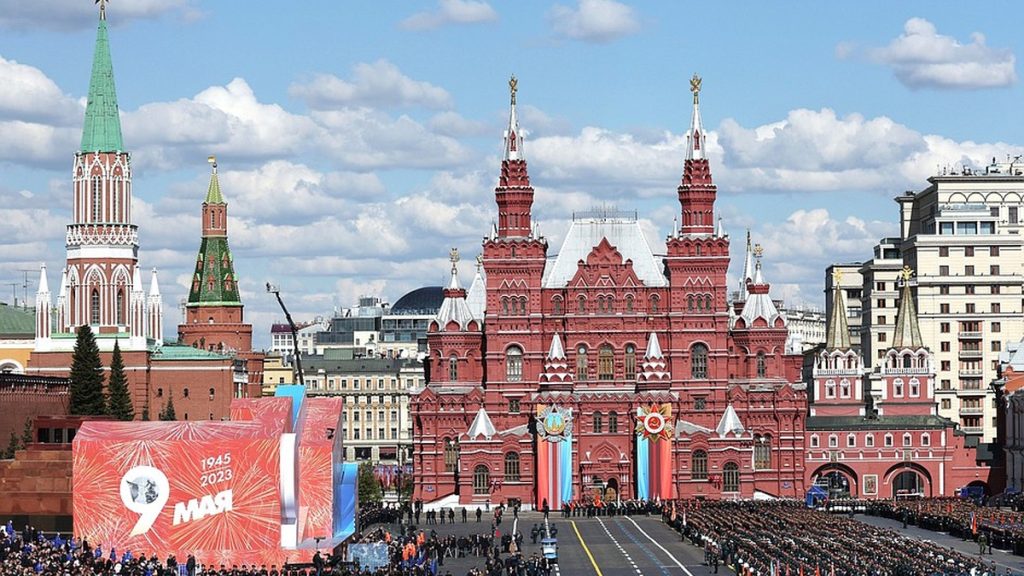While Ukraine prepares to launch a large-scale counteroffensive against the Russian forces in the southeast of the war-torn nation, Moscow remains preoccupied with its internal divisions. For the Kremlin, the celebration of the Victory Day on May 9 seems to have priority over the war in the Eastern European country, even though the outcome of the conflict could have a serious impact on the very existence of the Russian Federation.
Ukrainian shelling of the Russian regions of Bryansk, Kursk and Belgorod has become a norm a long time ago. Although such actions represent Kiev’s response to Russia’s invasion of the former Soviet republic, the Kremlin’s policy of turning a blind eye to Ukrainian attacks perfectly illustrates all the weakness that Moscow has been demonstrating over the past 14 months.
On May 3, Russia accused Ukraine of attacking the Kremlin with drones in an attempt to kill President Vladimir Putin. It was the most serious allegation that Moscow has leveled at Kiev so far. The Kremlin promised to respond, although to this day Russia did not strike any administrative buildings in the Ukrainian capital, nor did it attempt to assassinate any Ukrainian officials. Instead, the Kremlin continues implementing its current policy vis-à-vis Ukraine, aiming to reach a deal with Kiev on various issues.
Following the alleged Ukrainian attack on the Kremlin, Vyacheslav Volodin, speaker of the Russian Parliament, said that there could “be no negotiations with the Zelensky regime.” That, however, did not prevent Russian representatives to discuss a potential extension of the Black Sea grain deal with Ukraine. Even though the two nations failed to reach a deal, the fact that Moscow agreed to hold talks with those it accuses of planning to kill their president, suggests that Russia does not plan to seriously respond to the Kremlin drone attack.
On the other hand, Russia has, over the past few days, launched several missiles and drone attacks on Kiev, but reports suggest that all of them were shot down by the Ukrainian air defense. Moreover, the Eastern European country has even managed to down a Russian hypersonic missile, which suggest that if the Kremlin ever decides to strike “decision making centers” in Kiev – which is not very probable – it will be easier said than done.
Meanwhile, Russia’s Wagner private military company will continue implementing a frontal assault military tactics trying to capture Bakhmut, or some other places in the Donbass that have no strategic importance whatsoever. But in order to achieve such a goal, the Wagner Group will need ammunition. On May 5, the Wagner frontman Yevgeny Prigozhin blamed Russian officials for starving his company of ammunition.
“Shoigu, Gerasimov, where’s the ammunition, damn it?” Prigozhin said, accusing Russia’s Defense Minister and Chief the General Staff of “treason” for their failures to support and supply the Wagner Group in Ukraine.
While the Wagner mercenaries, as well as the Russian troops in general, face with a lack of weapons, ammunition, and military equipment, the Kremlin uses the traditional Victory Day parade to show Russia’s “military might”. Also, for the Russian elite the May 9 parade is a unique opportunity to demonstrate that Putin is not isolated in the global arena, and that he can host leaders of countries such as Belarus, Armenia, Tajikistan, Kazakhstan, Kyrgyzstan and Uzbekistan in Moscow.
But on the ground in Ukraine, Russian leadership has to deal with reality in which Moscow has a hard time supplying its forces with ammunition. In order to prevent a schism within the Russian elite, the Kremlin has reportedly found a way to supply the Wagner Group with enough ammunition, which means that Prigozhin’s mercenaries will continue dying in vain trying to capture small towns in the Donbass.
While they remain busy fighting in Bakhmut, Moscow will continue evacuating people living in parts of the Zaporozhe region – including areas near the Zaporozhe nuclear power plant – that is still under the Russian forces’ control. Given that the Kremlin used exactly the same methods in Kherson in October and November 2022, it is entirely possible that Russia will soon make another “difficult decision” and retreat from parts of the Zaporozhe region, just like it abandoned Kherson last year.
Meanwhile, the Kremlin will likely keep creating an illusion that it is determined to fight “until victory”, while in reality it desperately seeks to reach a deal with Ukraine almost under any conditions. But according to Henry Kissinger, a former US secretary of state, actual (Chinese-brokered) negotiations between Moscow and Kiev are unlikely to start before the end of the year. Since Kissinger is Putin’s “old friend”, who got to know the Russian leader back in the early 1990s, his words should be taken very seriously.
Thus, Ukraine will likely be ready to hold talks with Russia after it makes serious gains as a result of its counteroffensive. The Kremlin, for its part, will use its propaganda machinery to portray such an outcome of the conflict as a “great victory”, even though in the coming months Russia may lose significant portions of the territory it currently controls. But will the Russian population, tired of Putin’s “difficult decisions”, “goodwill gestures”, and “strategic regroupings”, buy such a propaganda narrative?
